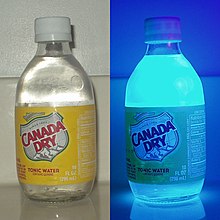– History:
– Spanish used quinine from Cinchona trees in the 17th century
– Medicinal quinine was recommended in 19th century British India
– Tonic water was created in 1858 by Erasmus Bond
– Gin and tonic originated in British colonial India
– First known record of gin and tonic in 1868 in the Oriental Sporting Magazine
– Quinine content:
– Modern tonic waters contain less quinine
– Tonic water is often sweetened with sugar or high-fructose corn syrup
– Some tonic waters contain artificial sweeteners
– FDA limits quinine content in the US to 83ppm
– Quinine was previously recommended for leg cramps until about 2010
– Use:
– Tonic water is a popular mixer for cocktails like gin and tonic
– Vodka tonic is another common cocktail
– Tonic water with lemon or lime is known as bitter lemon or bitter lime
– Espresso and tonic is a trendy coffee drink since 2007
– Tonic water is used in various cocktails globally
– Negative effects:
– Tonic water can cause fixed eruptions due to quinine
– Repeated intake of tonic water can lead to severe skin reactions
– Cases of fixed eruptions have been linked to tonic water consumption
– Symptoms of fixed eruptions include pigmented macules and high fever
– FDA cautions against using quinine for off-label leg cramp treatment
– Fluorescence:
– Quinine in tonic water fluoresces under ultraviolet light
– Quinine visibly fluoresces in direct sunlight against a dark background
– Quinine molecules release light energy instead of heat
– Molecules eventually return to a ground state and stop glowing
– Quinine fluorescence is a unique property of tonic water
Tonic water (or Indian tonic water) is a carbonated soft drink in which quinine is dissolved. Originally used as a prophylactic against malaria, nowadays tonic water usually has a significantly lower quinine content and is often sweetened. It is consumed for its distinctive bitter flavor and is frequently used in mixed drinks, particularly in gin and tonic.

